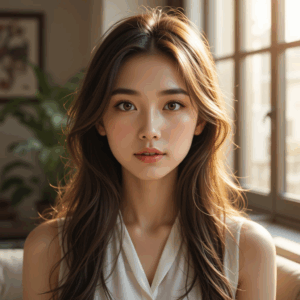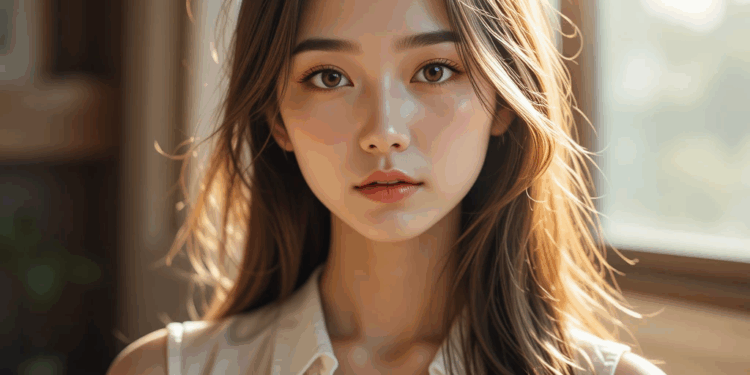Delving into the world of AI Models Breaking the Internet with Their Beauty, this captivating introduction provides an intriguing glimpse into the intersection of artificial intelligence and aesthetics.
As we explore the impact of visually stunning AI models on online engagement, we uncover the fascinating technological advancements driving this phenomenon.
 Artificial Intelligence models breaking the internet with their beauty are a result of advanced neural networks and algorithms that are specifically designed to create visually appealing content.
These AI models are trained using deep learning techniques, where large datasets of images are used to teach the model to recognize patterns, features, and aesthetics that are considered attractive to humans.
. Her presence challenges traditional notions of beauty and blurs the lines between human and machine.
Artificial Intelligence models breaking the internet with their beauty are a result of advanced neural networks and algorithms that are specifically designed to create visually appealing content.
These AI models are trained using deep learning techniques, where large datasets of images are used to teach the model to recognize patterns, features, and aesthetics that are considered attractive to humans.
. Her presence challenges traditional notions of beauty and blurs the lines between human and machine.
Introduction to AI Models Breaking the Internet with Their Beauty
AI models in the context of beauty refer to artificial intelligence-generated images or avatars that are designed to possess aesthetically pleasing features. These models are created using advanced algorithms and deep learning techniques to mimic human-like appearances and characteristics.The significance of AI-generated content in the digital age lies in its ability to revolutionize the way we perceive and interact with virtual entities. With the rise of social media influencers and digital personalities, AI models offer a new dimension to online engagement by captivating audiences with their flawless looks and unique aesthetics.Aesthetically pleasing AI models have a profound impact on online engagement as they attract attention, spark curiosity, and generate a sense of fascination among internet users. Their beauty not only garners likes, shares, and comments but also challenges traditional notions of beauty standards and opens up discussions on the intersection of technology and aesthetics in the digital realm.The Technology Behind Stunning AI Models
 Artificial Intelligence models breaking the internet with their beauty are a result of advanced neural networks and algorithms that are specifically designed to create visually appealing content.
These AI models are trained using deep learning techniques, where large datasets of images are used to teach the model to recognize patterns, features, and aesthetics that are considered attractive to humans.
Artificial Intelligence models breaking the internet with their beauty are a result of advanced neural networks and algorithms that are specifically designed to create visually appealing content.
These AI models are trained using deep learning techniques, where large datasets of images are used to teach the model to recognize patterns, features, and aesthetics that are considered attractive to humans.
Neural Networks and Algorithms
- Neural Networks: AI models utilize neural networks, such as Convolutional Neural Networks (CNNs), which are adept at processing visual data and extracting features that contribute to beauty in images.
- Algorithms: Various algorithms like Generative Adversarial Networks (GANs) are employed to generate new images that mimic real-life beauty standards based on the learned patterns.
Training Process for AI Models
- Data Collection: A diverse range of images is collected to train the AI model on different types of beauty standards and aesthetics.
- Labeling and Annotation: Each image in the dataset is labeled and annotated to provide the model with information on what features contribute to beauty.
- Training: The AI model is trained iteratively on the dataset, adjusting its parameters to minimize errors and improve the quality of generated images.
Role of Data Augmentation
- Data augmentation techniques, such as rotation, scaling, and flipping of images, are used to increase the variability of the training dataset.
- By augmenting the data, the AI model learns to generalize better and produce visually stunning content that reflects a wide range of beauty standards.
Examples of AI Models that Have Captivated the Internet
AI models that possess stunning beauty have taken the internet by storm, captivating users worldwide. Let's delve into some of the most notable examples that have garnered widespread attention.Sophia the Robot
Sophia, developed by Hanson Robotics, is one of the most famous AI models known for her striking human-like appearance. With expressive features and advanced AI capabilities, Sophia has become a cultural icon, appearing in interviews, TV shows, and eventsLil Miquela
Lil Miquela is a virtual influencer and model created by the AI company Brud. With a flawless complexion and trendy style, Lil Miquela has amassed a large following on social media platforms like Instagram. Her digital existence blurs the boundaries of reality and fiction, sparking discussions about the impact of AI on beauty standards.Shudu Gram
Shudu Gram is a digital supermodel created by visual artist Cameron-James Wilson. With stunning photorealistic features and a captivating presence, Shudu has graced the covers of fashion magazines and gained a significant following on social media. Her existence raises questions about diversity, representation, and the future of beauty in the digital age.Ethical Considerations in Creating Beautiful AI Models
Creating visually stunning AI models raises several ethical concerns that need to be addressed to ensure responsible use of this technology.Beauty Standards in AI-generated Imagery
When AI models focus on creating beauty, there is a risk of perpetuating narrow beauty standards that may not be inclusive of diverse representations of beauty.- AI models may unintentionally reinforce societal norms that prioritize certain physical features over others, leading to unrealistic beauty standards.
- This can have negative implications on individuals' self-esteem and body image, especially when they do not conform to these idealized standards.
- It is essential to consider the impact of AI-generated imagery on promoting a more diverse and inclusive definition of beauty.
Diversity and Inclusivity in AI Models
Concerns regarding the lack of diversity and inclusivity in AI-generated imagery must be addressed to ensure fair representation and avoid perpetuating stereotypes.- AI models should be trained on diverse datasets that encompass a wide range of cultural backgrounds, skin tones, body types, and identities to avoid biased outcomes.
- It is crucial to prioritize inclusivity and representation in the development and deployment of AI models to prevent marginalized groups from being further marginalized.
- Ethical guidelines and regulations should be established to promote diversity and inclusivity in AI-generated content and ensure equal opportunities for all individuals.
Mitigating Negative Impacts of Beauty-focused AI Models
To mitigate the potential negative impacts of beauty-focused AI models on society, proactive measures need to be taken to promote responsible and ethical use of this technology.- Implementing transparency in the development process of AI models to ensure accountability and ethical standards are upheld.
- Engaging with diverse stakeholders, including ethicists, psychologists, and community representatives, to evaluate the societal impact of beauty-focused AI models.
- Educating users about the limitations and biases inherent in AI-generated imagery to foster critical thinking and awareness of the technology's implications.










